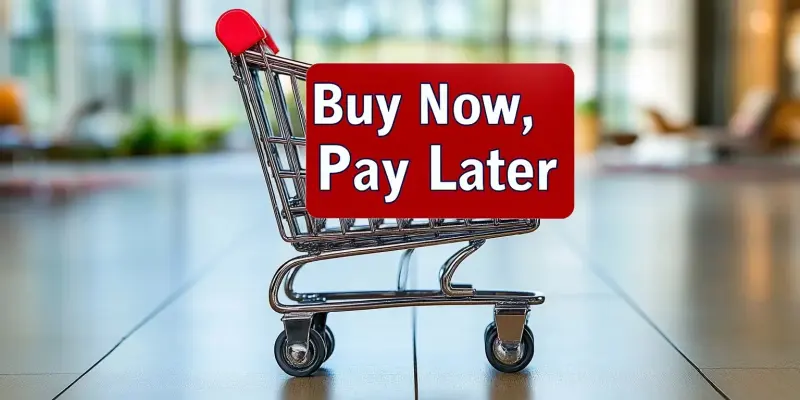As economic pressures mount and holiday shopping intensifies, more Americans are turning to Buy Now, Pay Later (BNPL) payment plans to manage their finances. On this year’s Cyber Monday, BNPL services experienced a significant surge, with consumers spending a record-breaking $991.2 million. This astonishing figure underscores the growing acceptance and popularity of BNPL services among consumers and the retail sector.
Increasing Adoption of BNPL by Consumers and Retailers
Consumer Spending Patterns and Trends
BNPL spending in the United States reached an impressive $75.1 billion in 2023, marking a 14% increase from the previous year. This trend has been bolstered by financially conscious younger demographics, such as Gen Z and Millennials, who find this payment option particularly appealing. Consumers are drawn to BNPL services because they offer a way to make purchases without the immediate financial burden of paying in full. This flexibility is particularly attractive during the holiday season when spending usually spikes. For many, BNPL services provide an alternative to traditional credit card debt, which can quickly become overwhelming.
Retailers, on the other hand, are embracing BNPL options with open arms. The ability to convert window shoppers into actual buyers and to encourage fuller shopping carts is a significant incentive for retailers. By integrating BNPL into their payment options, retailers can attract and retain more customers. Furthermore, the rise of e-commerce has heightened the need for diverse payment solutions, and BNPL fits perfectly into this digital paradigm. Retailers view these services as a way to enhance the shopping experience, reduce cart abandonment rates, and ultimately drive sales growth.
Financial Constraints and Consumer Behavior
However, while BNPL offers a lifeline for many financially constrained consumers, it also poses notable risks. The Federal Reserve Bank of Philadelphia conducted a survey, along with data from Bankrate, revealing that BNPL users often struggle to manage their finances. The flexibility of BNPL can lead to overspending and financial difficulties, especially for younger, financially constrained groups. Over half of Gen Z and Millennial users reported facing significant financial problems, including missed payments and debt collectors, compared to a quarter of Baby Boomers. This disparity underscores the challenges younger consumers face when managing BNPL arrangements.
Financial experts caution that while BNPL enables a flexible approach to purchasing, it requires careful budgeting and discipline. The allure of making purchases without immediate financial repercussions can lead to a cycle of debt if not managed responsibly. In addition, the potential for missed payments increases the risk of accruing penalties and fees, adding further strain to already stretched finances. This highlights the importance of consumer awareness and financial literacy to ensure the responsible use of BNPL services.
Regulatory Measures and Consumer Protections
The Role of the Consumer Financial Protection Bureau
In response to the growing concerns around BNPL usage, regulatory measures have been put in place to safeguard consumers. The Consumer Financial Protection Bureau (CFPB) has issued a rule classifying BNPL lenders as credit card providers. This classification grants consumers additional rights and legal protections, ensuring they are better equipped to handle any issues arising from using these services. By extending the same protections that apply to traditional credit card users, the CFPB aims to create a safer and more transparent financial environment for BNPL users.
Despite these regulatory advancements, the perception of BNPL as a safer alternative to credit cards persists among consumers. This perception, while partially accurate, downplays the potential financial pitfalls associated with BNPL usage. The misuse of BNPL can quickly lead to overextension and financial troubles, making it crucial for consumers to remain vigilant and informed about their financial commitments. The CFPB’s intervention serves as a reminder that while BNPL offers convenience, it must be approached with the same level of scrutiny as any other form of credit.
Balancing Benefits and Risks
As economic pressures increase and holiday shopping becomes more intense, a rising number of Americans are opting for Buy Now, Pay Later (BNPL) plans to handle their finances. This year’s Cyber Monday highlighted this trend vividly as BNPL services witnessed an impressive surge in usage. Consumers spent a staggering $991.2 million using these payment options, breaking previous records and demonstrating a clear shift in how people are choosing to pay for their purchases.
This phenomenal figure not only illustrates how widely accepted BNPL services have become among shoppers but also reflects their growing integration within the retail industry. The convenience and flexibility offered by BNPL plans make them an appealing choice for consumers looking to manage expenses while still taking advantage of holiday deals. It is evident that BNPL options are transforming the landscape of both consumer behavior and retail strategies, providing a timely financial tool for many as they navigate economic challenges and a bustling shopping season.

